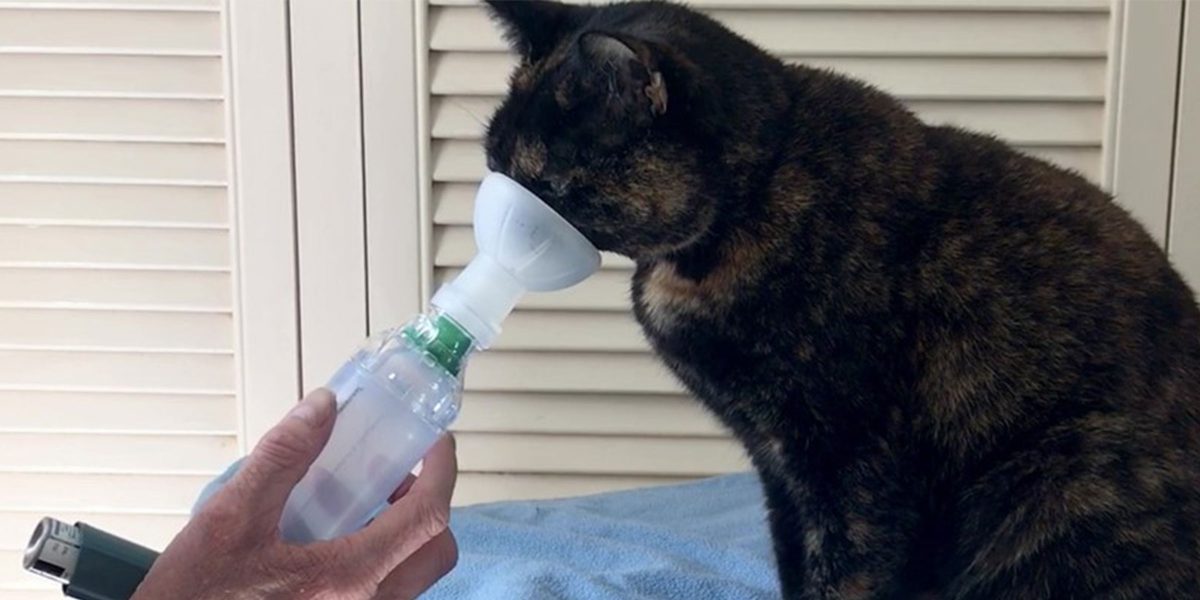Asthma in cats is a respiratory ailment characterized by inflammation or allergic reactions. It rears its head as recurrent acute episodes of suffocation, primarily caused by bronchial spasms and mucosal swelling.
This condition is regarded as a severe, challenging-to-treat affliction for our feline companions. Despite extended and costly treatments, achieving complete recovery for a domestic cat remains a rare occurrence in most cases.
Root Causes of Bronchial Asthma
While human and veterinary medicine have extensively studied bronchial asthma, the exact triggers of this ailment remain partially elusive. Attacks arise from bronchial spasms (bronchospasms), which impede the cat's breathing.
Typically, asthma in cats is provoked by allergies triggered by various allergens. These allergens can encompass both infectious and non-infectious agents, such as plant pollen, dust, parasites, viruses, fungi, protozoa, and humidity.
Note: If allergens follow a seasonal pattern, the disease in pets typically flares up during specific times of the year.
Genetic and breed factors also play a role in the disease's development; breeds like Siamese, Himalayan cats, and their hybrids are often more prone to asthma.
The condition can also be ignited by inflammatory processes in the respiratory organs, viruses, parasites, neoplasms, or even chronic bronchitis.
Unfavorable environmental conditions, like cigarette smoke, air fresheners, stress, dust, high humidity indoors, and frequent viral respiratory illnesses, can also contribute to the development of bronchial asthma in cats.
Attacks can also be triggered by low-quality commercial cat foods that contain synthetic substances, colorings, and flavorings.
Symptoms Asthma in cats are occasionally mistaken for other diseases like bronchopneumonia, heart and lung failure, which can lead to suffocation episodes. Thus, a thorough diagnosis is essential to determine the correct ailment.
Symptoms of asthma in cats encompass.
Lethargy, weakness, apathy, fluctuating body temperature, frequent coughing fits, labored breathing, wheezing, rapid fatigue, paleness, bluish mucous membranes, diminished response to external stimuli
The disease typically commences with an acute suffocation episode. The cat coughs, often brings up phlegm, extends its neck forward, and breathes through an open mouth. During these episodes, cats can display aggression, restlessness, adopt unnatural postures, and may ignore their owners, refusing food and water.
In severe cases, cats may collapse on their side, experience muscle spasms, convulsions, and anemia. Oxygen deprivation and coma can even occur. After an attack, the cat is left weakened.

Diagnosis and Treatment
Given the similarity of asthma symptoms to other diseases, it's impossible to provide an accurate diagnosis solely based on external signs and a superficial examination. Respiratory, viral, and parasitic infections, as well as oncological conditions, must be ruled out.
The veterinarian gathers medical history and prescribes a series of serological and instrumental tests. Differential diagnosis is also conducted.
Treatment depends on the stage, form, underlying cause, and the cat's age. The primary goal is to alleviate symptoms and mitigate suffocating cough episodes. Cats receive corticosteroids, antihistamines, vitamins, and beta-2-adrenomimetics.
Long-acting glucocorticoids in various forms, including injections, tablets, and inhalers that evenly disperse medication into the bronchi, are employed. Each case requires a tailored approach to treatment, making self-medication inadvisable to prevent exacerbating the disease.
In addition to veterinary care, optimal living conditions are essential. Ensure cleanliness and an appropriate humidity level in your home. Protect your cat from stress, overexertion, and contact with potential allergens. Use humidifiers during dry seasons. Avoid both overheating and extreme cold.
Prevention
Preventing asthma in cats, especially if the pet is predisposed to the disease, entails using household chemicals, hygiene products, and cosmetics specifically formulated for allergic individuals. Maintain cleanliness and an optimal indoor climate.
Provide your cat with a high-quality, balanced diet. Minimize exposure to stressors that can weaken the immune system. Adhere to vaccination schedules, treat for ectoparasites, and perform deworming using comprehensive anthelmintic agents. Keep food and water bowls, as well as litter boxes, clean. Strengthen your cat's immune system and protect it from temperature extremes.